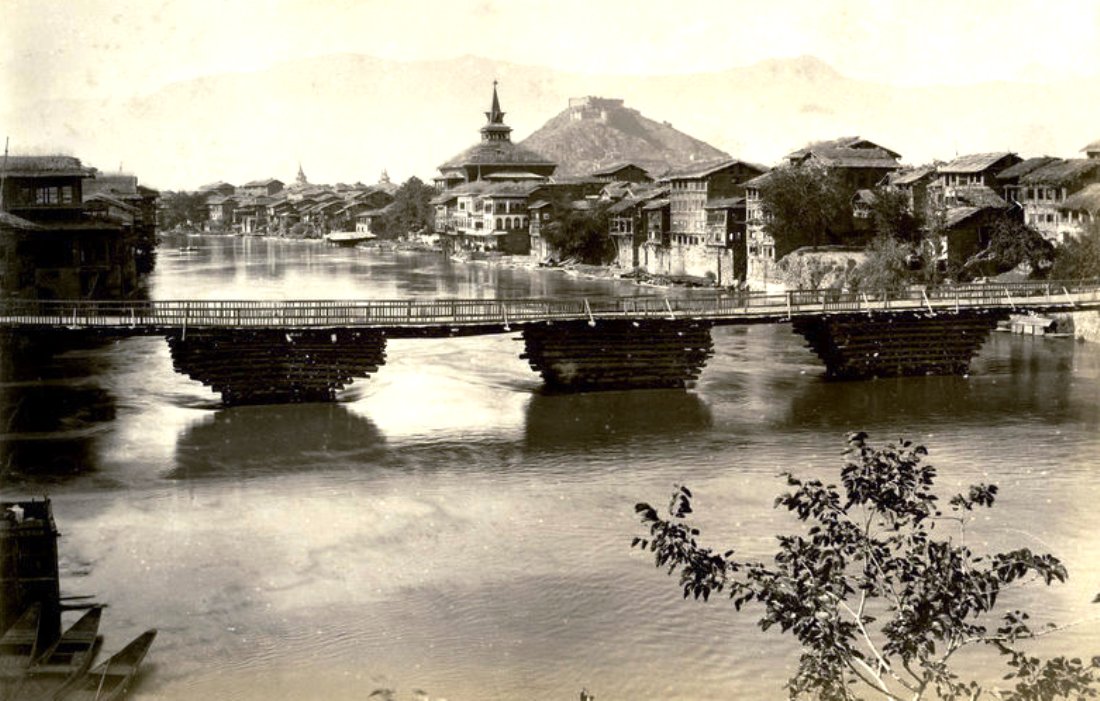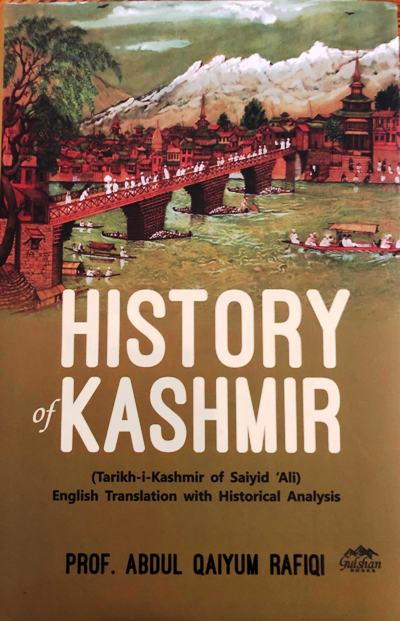Prof Abdul Qaiyum Rafiqi, one of Kashmir’s top historians has published the translation of a late sixteenth-century history chronicle, Sayyid Ali’s Tarikh-i-Kashmir. Prof Ashraf Wani read the book and was impressed by the fascinating conversion of the Persian chronicle into English

Like other regions of the sub-continent, the heritage of Kashmir is mainly preserved in Sanskrit and Persian texts besides the word fund and different genres of regional language—Kashmiri. This is the reason that sections of Kashmiri scholars have the anxiety to preserve and popularise the Kashmiri language and to see that the treasure in Sanskrit and Persian is translated into English and other languages to democratise access.
One of these concerned scholars is Prof Abdul Qaiyum Rafiqi, a former Professor of History, at the University of Kashmir, and the author of well-known work, Sufism in Kashmir. The reason that prompted the Professor to undertake the present work is therefore understandable. The choice for Tarikh-i-Kashmir of Sayid Ali for the purpose is also obvious as it is the earliest extant Persian chronicle of Kashmir written in the sixteenth century CE plus this is the solitary copy available to the best of the knowledge of Kashmiri scholars including Prof Rafiqi.
Exhaustive Introduction
Prof Rafiqi, however, does not believe that the details contained in the texts are irrefutable facts, and they speak for themselves. Instead, he is a firm believer that the texts require the historian to verify their authenticity and to reconstruct them as an object of knowledge. This is why there is an exhaustive introduction containing the history of Kashmir based on the critical study of different categories of sources. This is also the reason that wherever the chronicler of the Tarikh appeared subjective or erroneous, Prof Rafiqi sets the records straight by giving end notes to the targeted text. It is in this context that the significance of the three segments of the book—reproduction of the Persian text, its translation into English with end notes, and the introduction—becomes intelligible.

The reproduction of the text helps the reader to learn about the actual terms used in the original and to check the balance struck by the translator between the “foreignness” and the “domestication” of the target language. The immaculate translation exhibited in trying to retain linguistic flavour, literary sensibility and lexical and cultural equivalence enables the scholarship. Researchers with language problems but otherwise better equipped with current trends of historiography to revisit the sources can invoke new meanings from them. This ultimately infuses a new life to history writing and makes it relevant to the demands of the fast-changing understanding of social and natural sciences. For an adequate understanding of the text, the translated text carries elaborate notes that either correct the original author’s information or provide additional information not communicated by the source text itself.
Twin Purposes
The exhaustive introduction to the book delineates the history of the Sultans. It has twin purposes. First, it provides a context to the contents of the target text, and second, the translator gives his own opinion on some issues considered incontrovertible facts by historians. Both the introduction and the end notes demonstrate the author’s remarkable command over a variety of sources as well as his own reading of sources which substantiates the fact that a text is no longer like a stable vessel containing a fixed meaning.
It is rather a dynamic entity providing and sustaining a range of meanings. Contrary to the generally held opinion that Rinchna accepted Islam at the hands of Saiyid Sharaf al-Din Bulbul Shah, Prof Rafiqi, drawing on Abul Fazl, attributes the conversion to Rinchna’s association with Shah Mir. Revisiting many other important developments of the period, namely the background of Sultan Zain al Abidin’s liberal policy towards non-Muslims and the ‘anti-Shii’ policy of Mirza Haider Dughlat is rewarding. Equally scholarly is the rejection of the supposed meeting between Mir Muhammad Hamadani and Sheikh Nūr al-Din Rishi (pp. 82-83); and the encounter between Shaikh Nūr al-Din and Bhum Sād. (p. 87)
Newer Revelations
The entire episode of Mir Muhammad’s spiritual encounter with Shaikh Nuru’ d-Din appears to be a figment [of imagination] of medieval scholars in order to bring the Rishi saints of Kashmir within the orbit of the Kubravi order. But the very anecdote on which the store of the Kubravi saint’s association with the founder of the Rishi order is based does not stand historical scrutiny. First, the irreconcilable discrepancies in the matter of fact and the unexplained lacunas in the narrative of the sources raise serious doubts about the authenticity of the anecdote (so-called “historical meeting” between the two saints). Secondly, and more importantly, the chronology of the events as described in the historical literature clearly shows that the meeting between the two spiritual luminaries could not have taken place (pp. 83).
As is true of many other eminent medievalists, Rafiqi considers that the stories narrated by the author of the Tarikh about the supernatural powers of the saints are, like other hagiologists, mainly spun out of his mind to meet the needs of the collective mentality of the time
By the time Saiyid ‘Ali compiled his Tarikh, the corpus of apocryphal tales about famous Sufis had grown to a great volume. Our author seems to have been highly impressed by the elements of marvellous and supernatural in these tales. This is quite visible in the stories he describes regarding the conversion of two prominent disciples of Shaikh Nuru ‘d-Din – the story of Shaikh Nuru ‘d-Din approaching Bhum Sadh dressed in a cow skin is quite incompatible with the known character of the Shaikh.
The book is a must-read not only for research scholars curious to pose new questions and look for new answers but also for general readers interested in the political and religious history of the Sultanate period. What has impressed me personally is Prof Rafiqi’s handling of untranslatability- the difficulty of achieving perfect translation which makes translations in themselves great works of philosophy.
















Nice abd valuable contribution in the history of Kashmir